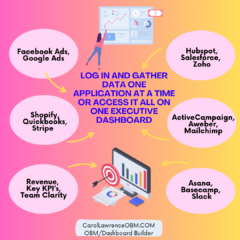Guest Article By Kelsey Rausch
In today’s technology-obsessed world, it is all too easy to do everything online. From paying bills to running a small business, there is more information than ever on the Internet.
However, all of this information can sometimes be easily accessed by criminals and snoops, and the number of data breaches happening in our nation every day is shocking. In fact, 57% of small businesses have reported staff-related cyber breaches in recent years.
Unfortunately, by the time a data breach comes to light, it is often too late. Chances are the information and the money lost via cyber breaches are already gone — a full 68% of funds stolen this way are actually declared unrecoverable.
Discovering exactly what happens to this stolen money and how fast it is spent was the goal behind a new study from the Federal Trade Commission. In their newest agency study, the FTC created a batch of fake profiles as a way to see what happens to leaked data. They created over 100 profiles with a fake name, an address found from a national database, an email address, a phone number, and one method of electronic payment.
According to CNBC, the idea was to make the database look as realistic as possible — as if the information could have been stolen from an actual small business. The FTC researchers then posted the payment information, either credit card or Bitcoin, a few times a day on dark websites they knew hackers frequent.
They found that hackers were able to access the financial information within nine minutes and were able to make purchases– that went through! — immediately afterward. The report included three major findings:
1. Thieves targeted credit card numbers the most, simply because credit cards are able to transfer their currency into money right away. The researchers also found that the hackers were able to access the credit card numbers weeks after the initial breach, meaning that if credit card owners are not vigilant about monitoring their checking accounts they can be at risk.
2. Cards that have two-factor authentication were impossible to hack. So credit card owners beware, the more steps you take to protect your bank information, the better! Always choose at least two passwords for every account, or incorporate security questions as a way to log into your account.
3. Hackers tend to charge a lot of little purchases. More often than not, the hackers would spend less than $10 per purchase with their stolen credit card numbers. The FTC researchers believe the reasoning behind this is that many customers won’t even notice small purchases! These micro-charges add up over time, and the longer consumers wait to report suspicious activity, the harder it becomes to contest the charges. So, bank experts recommend monitoring your account as often as possible as to not run into this problem.
In short, the FTC study reveals a simple yet disturbing fact: The Internet has made consumers lives easier in countless ways; unfortunately, it’s made criminals lives that much easier, too.
Kelsey Rausch is a writer and an avid world traveler. When shes not writing or listening to 80s music, you can find her exploring different countries, taking selfies with her dog Lady, and in constant search for the perfect brownie recipe.









